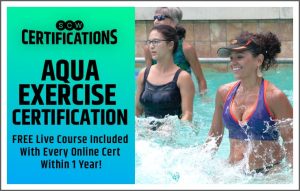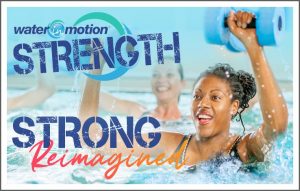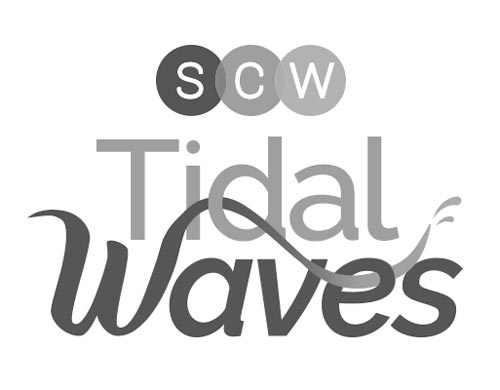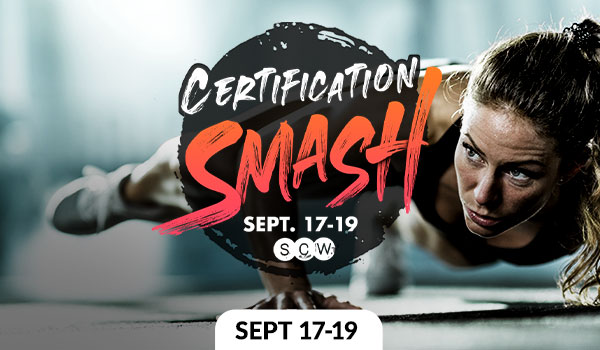
Take Care of Your Shoulders
By Christine Alexander
We don’t usually think about our shoulders, but we use them all the time to do things like lifting a bag of groceries, opening the car door, wiping the kitchen counter, picking up a child, lifting a drink, combing our hair, reaching behind our back to thread a belt through the loops and more. Two major bones of the shoulder are the humerus or arm bone, and the scapula or shoulder blade. The four muscles of the rotator cuff stabilize the shoulder joint or keep it in its proper position. Muscles in our chest and back and the deltoids on top of the shoulder are responsible for moving our arms in all the multiple directions they are capable of. Our shoulders are complex and amazing!
Rotator cuff injuries are common and increase with age. Fifty percent of adults over 60 have rotator cuff tears. Thirty-four percent of adults who have rotator cuff tears have no symptoms. For more information about the causes and treatment of a rotator cuff tear, see this article from the Mayo Clinic. It is a good idea to take care of your shoulders by keeping your muscles strong before an injury occurs. The water is an excellent place to do this because buoyancy decreases joint compression and allows better muscle function and relaxation. When the shoulders are submerged, circulation increases which assists in removing toxins and bringing in nutrients. Start by relaxing the shoulders. When your shoulder blades are flat, the rotator cuff is in good alignment. With your arms by your sides, turning the palms forward helps to bring the shoulders in good alignment. Some shoulder exercises to try in the water are:
- Lat pull-down. Hold resistance tubing overhead and pull the ends down to the sides.
- Jumping jacks with the thumbs up.
- Breaststroke with the thumbs up
- Rear delt fly. Pull the ends of resistance tubing apart at shoulder level.
- Shoulder extension. Bring the arms in front of the body at the surface of the water and press down. You can add resistance with drag equipment, such as paddles. Or hold resistance tubing at the surface of the water with one hand and pull the opposite end down with the other arm.
- Cross-country ski with the palms facing forward.
- Rotator cuff sweep. Bring your elbows down near, but not glued to, your waist. Sweep your hands out to the side and back to center. Or keep your hands out to the sides and walk backwards.
- PNF. (1) Bring one fist to the opposite shoulder then sweep it diagonally out to the side near the hip with the palm facing back. (2) Bring one fist to the opposite hip then sweep it diagonally up to the side with the palm up, as if pulling a sword out of its scabbard and brandishing it.
- Figure eights to the sides, to the front, or one arm at a time.




In addition to strengthening the shoulder, there are some cautions to help you avoid an injury. Look at the drawing of the shoulder bones. The head of the humerus is like a golf ball sitting on a tee (the glenoid cavity). This allows the shoulders to be extremely mobile, but they are not designed for weight bearing. Therefore, do not hang on walls, because then you are using your shoulders to support your weight. The photos demonstrate some other things NOT to do. You want to avoid impinging the shoulder, which means pinching the tendons of the rotator cuff. Impingement occurs when you hang from foam dumbbells with the arms extended to the sides and when you are suspended from foam dumbbells in a reclining position. Using a noodle around the torso can also cause impingement if it is too high. Position it mid-torso, just below the shoulder blades. Do not hang from foam dumbbells under the armpits as it damages the nerves in the armpit. Always wear a deep-water belt when using foam dumbbells in deep water. Keep your feet on the pool floor when using foam dumbbells in shallow water. Keep your shoulders relaxed while working with foam dumbbells. Impingement occurs when using the equipment with shoulders shrugged. If you have difficulty holding the dumbbells under water without shrugging the shoulders, use a smaller set of dumbbells, or switch to webbed gloves. Another instance of impingement occurs when the arms are extended to the sides with the shoulder internally rotated, that is with the thumbs down. That is why the breaststroke is done with the thumbs up. Yes, swimmers do the breaststroke with the thumbs down, but they are in a horizontal position, not in the vertical position of exercisers in a water fitness class. Be careful about bringing your arms too far back when doing a breaststroke. This exposes the head of the humerus, risking an injury. Keep your hands within your peripheral vision, unless you are doing a slow stretch.
Overhead reaches are functional, but do not sustain them for too long. The shoulder muscles fatigue quickly, so take a break after a few repetitions, or alternate arms. Do not bring the arms in and out of the water. As the arms break the surface, the resistance is suddenly gone, and the movement becomes ballistic. When you hold your arms out to the sides, do not continuously maintain a position between 80 and 120 degrees, because that can cause bursitis. It is better to have the arms at a 70 degree angle. Fast arm circles overload the small shoulder muscles. Slow the arm circles down. When holding a noodle in the hands for upper body work, it is best to have the hands shoulder distance apart. If the hands are too narrow, the shoulders are rounded. If the hands are too far apart, the shoulder blades are no longer neutral. Triceps dips with the noodle behind the back are also hard on the shoulders, and there are many triceps exercises that are more effective.
Take care of your shoulders so you can continue to lift those grocery bags, open the car door, wipe the kitchen counter, pick up a child, lift your drink, brush your hair, and reach behind your back to thread your belt through the loops without pain.
 About the Author: Chris Alexander
About the Author: Chris Alexander
Christine is a nationally certified water fitness instructor through the Aquatic Exercise Association (AEA) and an instructor-trainer through the United States Water Fitness Association (USWFA). She is the author of Water Fitness Progressions and of Water Fitness Lesson Plans and Choreography. Christine is a board member of the Metroplex Association of Aquatics Professionals & currently teaches 8 classes a week at Oak Point Recreation Center, for the Plano Parks and Recreation Department.
Cool Off at Dallas MANIA®
Arm and shoulder movement comes naturally with almost everything we do in our daily lives. Knowing how to protect and care for the muscles and tendons, especially as fitness professionals, not only helps prevent injuries but also lends to educating participants on their shoulder health as well. For more education from Chris Alexander, join her at SCW Dallas MANIA®, August 25-27.
Aquatic Exercise & Bone Density
by Irene Pluim Mentz
We have always heard that to increase bone density, you need weight bearing activities, preferably with increased impact. But is that really so? With this article I hope to increase understanding of the mechanics needed to keep your bones strong and debunk the myth of needing high impact weight bearing exercise as the one and only option.
What is bone density exactly? The density of our bones is measured by the amount of minerals, mostly calcium and phosphorous, in a certain volume of bone. It means that if you have a higher amount of those minerals in your bones, your bones are stronger, more dense, than those of somebody with fewer of those minerals per volume unit of bone. And when something is more dense, it usually is stronger.
In this instance, it means you might be less likely to break a bone than somebody with a lower content of these minerals. And since bone fractures, especially in post menopausal women, is a major cause of disability, it would be beneficial to reduce that risk.
In many publications, it is recommended to walk, run, hike, dance, play tennis, or climb stairs to help maintain bone density. Recently strength training has been added to the list of activities that have a positive impact on the strength of our bones. But why are these things beneficial?
Let’s dive into a bit of anatomy:

Muscles are attached to bone by tendons at the osteotendinous junction (OTJ). When muscles contract (shorten) the tendon pulls on the bone and makes it move. Every time there are forces transmitted from the OTJ to the bone, it elicits mineral absorption, increasing the amount of minerals per volume unit of bone i.e. increased density!
However, not all types of exercise deliver an equal amount of these osteogenic forces. To have a beneficial effect on the strength of the bone (bone density) the mechanical load needs to exceed that of your usual daily activities, hence the recommendation for hopping, jumping, and running. Progressive resistance exercises are included in this recommendation.
Resistance training, aka strength training, increases muscle strength. As your muscles grow stronger, they pull harder, more forcefully, on your bones, increase the mineral absorption, and therefore strengthening your bones.
Unfortunately the reverse is also true: a more sedentary lifestyle decreases muscle strength, which in turn diminishes the force applied on your bones. At that time, mineral absorption decreases, causing bones to become weaker. To continue the benefit of strength training, it will need to be progressive; meaning: if you do the same strength training routine over and over, it will become the new baseline and your body will adjust to that.
Most frequently, when we hear about osteoporosis we think of elderly women. And yes, it is true that women are at greater risk to lose some of their bone density. However, men are at risk too, especially if there is a history of having used steroids, anticonvulsants (seizure medication), cancer therapies and several other risk factors, including thyroid, kidney, or digestive system problems. About 50% of women over 50 years of age will fracture a bone due to osteoporosis where for men that statistic is about 1 in 4.
Aquatic fitness is a great modality for people who have been sedentary or already have some form of osteoporosis, since it cushions the impact on the joints, therefore minimizing possible pain or discomfort from joint related issues. However, due to the viscose nature of water, it provides a much greater resistance than typical land exercises do.
It also decreases the risk of falling, causing people to be more willing to try exercises that could potentially lead to loss of balance, such as single leg stands, hops, or even jumps. The variety of exercises, equipment choices, and depth level changes available in the pool give an unlimited amount of variety, aiding the need for continued progression to combat adaptation.
The AEA states the following: The resistance level of water just from physical movement places a demand on the skeletal system, thus placing a load on the bones. Once the bones are subjected to this stress they are forced to respond and increase muscle tension. This entire process results in stronger and denser bone, happening with just minimal movement.
Think what could happen is you added specific bone loading exercises and added resistance equipment yet to that (emphasis added by author).
Another finding has been that the impact on the bottom of the pool adds to the bone loading capacity. Even though this impact is reduced compared to land based exercises, it still provides the stress to the bones and therefore increases their strength. Not to say that deep water exercise does not have this value; rather, those participants have a greater water resistance factor to overcome and load their OTJ and thus their bones in that manner.
And on Oct 9, 2019, Playcore reported the following findings from research they found: While the control group demonstrated a decline in all measures, the aquatic exercise group increased bone mineral content while maintaining bone mineral density. The findings that aquatic exercise maintains bone density which prevents the expected yearly decline should (also) not be overlooked.
Conclusions:
Do we need high impact exercise to maintain bone density? My conclusion is a resounding: NO. What we do need however, is a progressive overload of our OTJ and muscles to maintain the mineral content in our bones.
Can aquatic exercise be used to accomplish that: ABSOLUTELY!
Let’s turn to our liquid gyms!
 About the Author: Irene Pluim Mentz
About the Author: Irene Pluim Mentz
Irene PluimMentz became a licensed physical therapist in the Netherlands before immigrating to the United States. She is the co-owner of One Step Beyond, Inc. Physical Therapy. Irene’s passion for anything “water” led to becoming an AEA certified instructor. She integrates her knowledge of hydrodynamics with physical therapy into all of her sessions. Irene is the inventor and developer of the Aqua-Ω adjustable drag resistance water exercise equipment.
A Detailed Guide to Cold Water Therapy
by Lauren Bedosky
Scroll through Instagram and you’ll likely see videos of people climbing into tubs filled with ice and frigid water, taking cold showers, or plunging into freezing alpine lakes. While you might be tempted to write off these feats as a social media trend, submerging your body in bone-chilling water is actually an age-old practice known as cold water therapy, a type of cryotherapy.
Cold water therapy is the use of water to promote health or manage disease, according to research. While it has a long history, it’s primarily used to speed healing after an injury, ease joint and muscle pain, and quicken recovery from exercise, among other possible health benefits.
Research on the topic has generally focused on pain, muscular injury prevention and recovery, and mood, and cold water therapy is considered a complementary therapy given that it’s an evolving field. Read on to learn about potential health benefits and the possible risks of cold water approaches for health and medical uses, and to evaluate if this therapy is worth discussing with your doctor.
History of Cold Water Therapy
Cultures around the world have used cold water therapy for thousands of years. For example, cold water immersion was used for therapeutic and relaxation purposes in ancient Greece and promoted by Roman physician Claudius Galen as a treatment for fever, according to a review published in February 2022 in the European Journal of Applied Physiology.
Per the same review, physician Edgar A. Hines came out with research in the early 20th century that helped us understand some of how cold water immersion works in the body — in particular, the effects of cold water immersion on blood pressure and the autonomic nervous system, which controls automatic physiological processes like heart rate.
In the early 2000s, researchers turned their attention to cold water and exercise recovery. “A lot of the research that we see now shows how cold water influences circulation and how that plays into muscle damage that occurs as a result of exercise, and also some of the cellular processes that go into muscle soreness,” says Mathew Welch, CSCS, an exercise physiologist at the Hospital for Special Surgery in New York City. As a result, many professional and everyday athletes turn to cold water therapy to help recover from exercise.
Recent interest in cold water therapy is thanks in part to Wim Hof. Hof, also known as “The Iceman,” is a Dutch extreme athlete who earned his nickname by breaking world records related to cold exposure. His feats include swimming underneath ice for approximately 217 feet and standing in a container while covered in ice cubes for more than 112 minutes, according to his website. He took what he learned from his cold experiences and created the Wim Hof Method, a combination of breath work, cold therapy, and commitment practices. Proponents claim that this method increases energy, boosts the immune system, improves sleep, and helps the body heal faster.
How Cold Water Therapy Works
Exposing your body to cold water causes the blood vessels in submerged areas to narrow (known as vasoconstriction), which directs blood to your organs, says Jonathan Leary, who has a doctorate in chiropractic medicine and is CEO and founder of Remedy Place, a wellness facility in New York City and California that offers ice bath classes.
Plus, water exerts pressure (known as hydrostatic pressure) on the body, which promotes blood flow to major organs like the heart, brain, and lungs, according to research. When more blood moves toward your major organs, it’s able to gather more oxygen and nutrients.
As soon as you emerge from the cold water, those same blood vessels expand (known as vasodilation), Dr. Leary says. When that happens, the oxygen- and nutrient-rich blood gets pumped back to your tissues, helping remove waste products, such as lactic acid, and lower inflammation, per research.
“You can’t have pain or disease without inflammation,” Leary says. As such, methods that lower inflammation, like cold water therapy, may be helpful for many health complaints.
Using cold water therapy on a regular basis may also have long-term benefits for your heart and blood vessels. Around every blood vessel is a muscle, so just like doing a bicep curl strengthens your biceps, cold water therapy strengthens your blood vessels, Leary explains. Over time, this may boost circulation by improving your blood vessels’ ability to circulate blood through your body.
Cold water therapy can be done at home, in a natural body of water, or at a fitness club, physical therapy clinic, or specialty wellness studio. However, it’s best to do cold water therapy under the guidance of a physical therapist, chiropractor, or other healthcare professional if you’re using it to recover from an injury, for sports performance, or to help with chronic pain.
Common Questions & Answers
- What does cold water therapy do?When you submerge your body in cold water, your blood vessels constrict. This pushes blood to your organs, where it collects oxygen and nutrients. When you leave the cold water, your blood vessels expand, sending oxygen- and nutrient-rich blood to your tissues. This may boost circulation and lower inflammation.
- How long should I stay in an ice bath?There are no universal guidelines. Some research has used water temperatures between 50 to 59 degrees F. You’ll want to limit your stay to 15 minutes, though this depends on the individual, as tolerance increases over time. Get out once you start to shake or shiver.
- What are the potential benefits of soaking in cold water?Cold water exposure may boost circulation and reduce inflammation. These actions may help relieve pain and quicken recovery from exercise. Research also suggests that cold water therapy releases brain chemicals associated with positive moods.
- What temperature should an ice bath be?
Check that your ice bath reaches between 50 to 59 degrees F, a temperature mentioned in studies, yet there are no universal guidelines, and the time and temperature may vary by each person and their goals. Use a thermometer to verify.
- How many times a week should you take an ice bath?The ideal number of weekly ice baths varies depending on your health goals. In general, two or three ice baths that last 10 to 15 minutes is a good weekly number to aim for. Keep in mind that you’ll have to build up to 10 to 15 minutes over time.
Types of Cold Water Therapy
You have a few options for cold water therapy.
Cold Water Immersion
Like the name suggests, cold water immersion involves immersing yourself in cold water up to your neck or immersing a specific joint or area of the body. Ice baths are a popular option for cold water immersion because you can control the temperature. You can take them at home, in a physical therapy clinic, or in a specialty recovery studio. If you live in a colder climate, you can wade into an icy body of water such as a lake. How long you spend in the cold water varies depending on the temperature and your tolerance level. If you stick to the temperature range of 50 to 59 degrees F that some research has used, be sure to limit your exposure to a maximum of 15 minutes, says John Gallucci, Jr., DPT, a medical coordinator for Major League Soccer who is based in Bridgewater, New Jersey.
Contrast Water Therapy
This method is similar to cold water immersion, except that it alternates exposure to cold water with exposure to hot water. The approach varies, but studies typically follow this protocol: Begin by immersing the affected limb in hot water (100.4 to 104 degrees F) for 10 minutes, then alternate between a one-minute immersion in cold water (46.4 to 50 degrees F) and a four-minute immersion in hot water until you reach a total duration of 30 minutes, according to research published in August 2018 in the Journal of Athletic Training. Contrast water therapy is often used in sports and physical therapy settings to promote recovery and reduce muscle damage, per this study.
Cold Showers
Taking a frigid shower offers a way to ease into cold water therapy, though the benefits may not be the same as those seen with cold water immersion, says Scott J. Biehl, DO, an orthopedics and sports medicine physician at Rochester Regional Health in New York. You may feel more alert in the short term, but research hasn’t shown that cold showers can help heal exercise-induced stress on the body, per Rochester Regional Health. However, cold showers can be an entry point into cold water immersion therapy, Dr. Biehl notes.
Wim Hof Method
The Wim Hof Method combines cold water therapy, breath work, and commitment practices, with the aim of reconnecting with yourself and the environment, according to its website. The potential benefits include greater energy, reduced stress, lower inflammation, better sleep, and faster recovery, per the website. However, most of the research supporting the Wim Hof Method consists of case studies on Hof himself. A more extensive study that tracks the outcomes of a randomized cohort of individuals following the Wim Hof Method, people who practice general meditation and breathing exercises, and people who don’t practice any of these methods would offer better support for these claims, says Biehl.
Possible Benefits of Cold Water Therapy
Taking a chilly dip may offer benefits.
1. May Aid Muscle Recovery
Stepping into an ice bath may help speed up recovery after exercise. In fact, the majority of research on the potential health benefits of cold water therapy involve muscle recovery.
There has been some evidence that cold water immersion reduces delayed onset muscle soreness after exercise, compared with passive interventions involving rest or no intervention at all, according to both a review and a meta-analysis.
Separately, one study evaluated the effectiveness of different types of cold therapy, either with chilled water or cold air. In this study, 10 men hopped into water at 50 degrees F for 10 minutes after performing a set of leg exercises. On another day, after the same leg exercises, they received whole-body cryotherapy, a therapy that involves sitting or standing in a chamber in which the air is up to minus 200 degrees F (the air was minus 166 degrees F in this study) for about three minutes.
Researchers found that cold water immersion was more effective than whole-body cryotherapy in lowering muscle soreness and perceptions of recovery 24 to 48 hours after exercise. But because this study and others like it have small participant groups, more robust research is needed to fully understand the relationship between cold water immersion versus whole-body cryotherapy for post-workout healing.
2. May Help Relieve Pain
Cold water therapy is often used in physical therapy settings to lower inflammation and pain in people with long-lasting (chronic) and short-term (acute) pain, Dr. Gallucci says.
Contrast water therapy has been reported to be used for treating pain from rheumatoid arthritis, carpal tunnel syndrome, foot and ankle sprains, and diabetes, according to the study in the Journal of Athletic Training.
Switching between the two extremes causes blood vessels to repeatedly constrict and open, leading to a pumping effect that increases blood flow and delivers more oxygen and nutrients to the tissues. It’s thought that this may reduce swelling, improve muscle function, and promote healing, per that study.
3. May Boost Your Mood
A cold water plunge may temporarily put you in a better mood.
For example, research shows that cold water immersion led to a 250 percent increase in dopamine. Dopamine is a neurotransmitter and hormone that plays a key role in mood. In fact, it’s known as the feel-good hormone, according to the Cleveland Clinic.
Plus, a small study found that taking a 20-minute ice bath four days a week improved quality of life in people with gout. Participants also reported less stress, anxiety, and depression.
Cold Water Therapy Risks
Exposing the body to drastic temperature changes — as when hopping into an ice bath or cold lake — is stressful for the body. It’s especially tough on the circulatory system, which encompasses the heart, blood vessels, and lymph system, per the National Cancer Institute. For this reason, people with heart, blood pressure, and other circulatory issues shouldn’t try cold water therapy without checking with their doctor first, Gallucci says.
Submerging your body in cold water also increases your risk of hypothermia, a potentially life-threatening condition that develops when your body temperature drops too low, according to the Mayo Clinic. Hypothermia can occur much more quickly in the water because water pulls heat away from the body 25 times faster than air, warns the National Institute for Occupational Safety and Health (NIOSH). What’s more, hypothermia can happen anytime the water temperature dips below 70 degrees F, per the NIOSH. Cold water immersion therapies generally use water temperatures between 50 and 59 degrees F, so take extra caution and foster awareness of hypothermia symptoms. It’s best to try cold water therapy with a healthcare provider’s guidance to avoid hypothermia and other risks given your health status.
And while the temperatures typically used in cold water therapies may not be cold enough to cause frostbite, you may get skin redness and irritation, Biehl says.
Who Might Want to Try (or Avoid) Cold Water Therapy
If you need to recover quickly after a game or intense exercise session, cold water therapy methods like ice baths may help you bounce back. Just be aware that cold water therapy interferes with the normal recovery process, which may blunt strength and muscle gains if used after every workout, Biehl says. So it may be best to use it sparingly, as in after a competition or an especially intense week of training.
Water therapy (hydrotherapy) in general may help people with chronic pain and those healing from injury, per the Cleveland Clinic. However, given how stressful cold water therapy can be for the heart and blood vessels, people with heart, blood pressure, and circulatory issues shouldn’t attempt cold water therapy without talking to their doctor first.
People with nerve disorders such as diabetic neuropathy (a type of nerve damage that can occur in people with diabetes, per the Mayo Clinic) should also check with their doctor before trying cold water therapy. According to Rochester Regional Health, the cold can affect the body’s sensory nerves and potentially place you in a state of paralysis if you have nerve issues.
Access to Cold Water Therapy
Cold water immersion therapy is often offered at athletic facilities and physical therapy centers. For privacy reasons, you may not be able to do full-body immersion, unless wearing swimwear is an option, but many physical therapists will submerge injured joints into cold water to decrease inflammation, Gallucci says.
You can also do most forms of cold water therapy on your own at home, after you’ve spoken with your doctor or a healthcare provider to determine if cold water therapy is safe for you. Taking a cold shower may be the easiest method for beginners who aren’t used to cold water exposure, but you can do ice baths if you have a bathtub or basin.
If you prefer, you can perform cold water immersion outdoors if you have access to natural bodies of water. Just check the water temperature before you wade in. Studies of cold water therapy tend to use temperatures between 50 and 59 degrees F, but there are no universal guidelines, so talk to your doctor about what’s best for you.
Some specialty recovery studios also offer cold water therapy. For example, Remedy Place has an ice bath class that begins with breathing exercises to help participants prepare for the frigid temperatures.
If you’re interested in learning the Wim Hof Method, start with the free mini class and then practice with the mobile app. To go deeper, take an online video course or attend an in-person retreat.
It’s always best to work with a physical therapist, chiropractor, or other healthcare professional to create a cold water therapy routine that fits your wellness needs, especially if you’re interested in using cold water therapy to improve sports performance or help with chronic pain or injury recovery.
Tips for Getting Started With Cold Water Therapy
If you’re new to cold water therapy, hopping into a frigid lake or a tub filled with ice may be too much of a shock. Take time to acclimate yourself before you take the cold plunge.
“We recommend our athletes and patients start with a cold shower or an outdoor pool that’s around 65 degrees F,” Gallucci says. You can use repeated showers over time (days or even weeks) to build up your tolerance.
Once you’re ready to submerge, simply fill your tub with the coldest water you can get from your tap. This will most likely fill your tub within the range of 50 to 60 degrees F, Biehl says. Double-check by dipping a thermometer in the water. If your water isn’t cold enough to reach 60 degrees, that’s okay; you can add ice after your tolerance to cold exposure has increased.
If you prefer to plunge into a natural body of water, look online to find information about options in your area. The Centers for Disease Control and Prevention provides water quality information by state, so you can avoid bodies of water that pose health and safety risks. In addition, the National Weather Service offers daily water temperature data. Look for water between 50 to 60 degrees F and bring a buddy for support. Don’t try it alone.
Once you’re ready for a dip, step carefully into the tub, barrel, or natural body of water and slowly lower yourself until you’re submerged from the neck down. You can also target a specific region of the body. For example, only sit in water high enough to cover the legs to boost recovery following an intense lower-body strength routine or cycling session, Biehl suggests.
“Try to sit for two or five minutes and work your way up to 10 minutes,” he says.
Leary recommends getting out once you start to shake or shiver. “That’s your body telling you that you’ve reached your max time for the day,” he says.
What to Expect Before, During, and After Cold Water Therapy
Your experience with cold water therapy will vary depending on the type you choose and your intended wellness goals.
Expect to submerge your body (or parts of your body) in water at least 59 degrees F. You can sit in a bathtub filled with cold water and ice, wade into a chilly lake, take a cool shower, or alternate cold water immersion with hot water immersion.
If you’re doing cold water therapy at home, you may choose to go without clothes. In other places, you can wear a swimsuit or shorts and a light top or sports bra.
Entering cold water may take your breath away at first, “and you can feel your heart race,” Biehl says. It may shock you into a heightened state of awareness, giving you an instant pick-me-up. As you sit there longer, your body adapts, and your heart and breathing rates slow, Biehl says. You may even feel relaxed.
In the beginning, you might spend only a few minutes in the cold water. You’ll have to gauge how your body responds and tailor your practice accordingly. “There’s a very fine line between what each person can tolerate,” Welch says. Just because your friend can sit for five minutes doesn’t mean you can. Get out once you start to shake or shiver, Leary says.
Once you get out of the water, let your body warm up naturally. “You will shiver,” Leary says. And it may take a while for your body to return to its normal temperature, “but allowing your body to get there on its own intensifies the effects of [cold water therapy],” he notes.
You may notice that you have greater mobility or less pain once you warm up, which is the circulation-boosting power of cold water therapy at work. In Leary’s opinion, there’s no better feeling than stepping out of a cold water therapy tub.
 About the Author: Lauren Bedosky
About the Author: Lauren Bedosky
Lauren Bedosky is an experienced health and fitness writer. She regularly contributes to top websites and publications like Men’s Health, Women’s Health, MyFitnessPal, SilverSneakers, Runner’s World, Experience Life, Prevention, AARP, Blue Cross and Blue Shield, UnitedHealthcare, Livestrong, Fitness, Shape, Family Circle, Healthline, Self, Redbook, and Women’s Running.
4 Simple Routines to Boost Recall, Retention, and Long-Term Memory
by Jeff Haden
was riding my bike when I had a great idea for a section of the book I’m writing. It was smart, clever (there is a difference), counterintuitive–but by the time I got home an hour later I had forgotten it.
Even though it’s unlikely something I couldn’t remember for more than an hour was that great, still: We’ve all forgotten things we really, really wanted to remember.
Which is clearly a problem: While success is always based on action, what you do always starts with what you know.
So what should you do if you need to remember something important? Most memory-improvement techniques — like testing yourself, mnemonics, and memory palaces — tend to involve significant effort. That’s why Inc. colleague Bill Murphy Jr. shared his list of simple ways to improve learning.
In the same spirit, here are a few of mine.
1. Say what you want to remember out loud.
A friend of mine repeats things he’s learning out loud.
If you think that sounds odd, think again. A study published in Journal of Experimental Psychology found that saying words out loud — or just mouthing them — makes them more distinctive. Separates them from all the other words you’re thinking. Makes them different.
All of which makes the words more memorable. (I do that when I meet new people. Saying their name out loud — out of earshot, of course — helps me overcome my “I just met you and I already can’t remember your name” Achilles’ heel.)
Try it. When you need to remember something, say it aloud. Or mouth it to yourself; the research shows that helps too.
That action alone will better file away what you want to remember in your cerebral cortex.
2. Try to predict whether you will remember something you want to remember.
While that sounds strange, this study published in Canadian Journal of Experimental Psychology found that the simple act of asking yourself whether you will remember something makes it half again as likely that you in fact will remember.
That’s especially true for remembering things you want to do, or what psychologists call prospective memories: actions, intentions, commitments, etc.
Clearly predicting whether you will remember something works, but why it works is up for debate. One theory is that the act of predicting is similar to testing yourself: Research shows quizzing yourself is an extremely effective way to speed up the learning process.
What is clear is that the act helps your hippocampus better form and index episodic memories for later access.
So if you want to remember to do something in the future, take a second and predict whether you will remember. That act alone makes it more likely you will.
3. Spend 40 seconds rehearsing something you want to remember.
Memory consolidation is the process of transforming temporary memories into more stable, long-lasting memories. Even though the process of memory consolidation can be sped up, still: Storing a memory in a lasting way takes time.
One way to increase the odds is to rehearse whatever you want to remember for 40 seconds. A study published in the Journal of Neuroscience found that a brief period of rehearsal — like replaying an event in your mind, going over what someone said in a meeting, or mentally mapping out a series of steps — makes it significantly more likely that you will remember what you rehearsed.
As the researchers write:
[That] brief period of rehearsal has a huge effect on our ability to remember complex, lifelike events over periods of one to two weeks. We have also linked this rehearsal effect to processing in a particular part of the brain — the posterior cingulate.
Rehearsing for 40 seconds? Doesn’t sound like much, but science says it should be enough to help you remember.
4. Sleep on things you want to remember.
According to a study published in Psychological Science, people who studied before bed, then slept, and then did a quick review the next morning not only spent less time studying, but they also increased their long-term retention by 50 percent.
Why? One factor is what psychologists call sleep-dependent memory consolidation. As the researchers write:
Converging evidence, from the molecular to the phenomenological, leaves little doubt that offline memory reprocessing during sleep is an important component of how our memories are formed and ultimately shaped.
Sleeping after learning is definitely a good strategy, but sleeping between two learning sessions is a better strategy.
Or in non-researcher-speak, sleeping on it not only helps your brain file away what you’ve learned, but it also makes that information easier to access.
That’s especially true if you also chunk your learning sessions by studying a little the next morning. The combination of a good night’s sleep and a little distributed learning is an extremely powerful way to retain anything you really want to remember.
 About the Author: Jeff Haden
About the Author: Jeff Haden
Jeff Haden is a keynote speaker, ghostwriter, LinkedIn Top Voice, contributing editor to Inc., and the author of The Motivation Myth: How High Achievers Really Set Themselves Up to Win.
Fall into Midwest MANIA®
It may be only the end of July, but SCW is ready to head to the Windy City. Join in on the fun at Midwest MANIA®, September 29-October 1 at the Westin O’Hare. Earn 20 CECs/CEUs at this not-to-miss 3-day fitness convention. With over 200 sessions and workshops, including two rooms filled with Aqua Education, that’s over 37 hours of new choreography, movement, music, and of course your favorite wild and wet water presenters. Register today starting at only $159.
Looking To Hire? FREE Job Board
In Need of Teachers, Trainers, Directors, or Managers? SCW’s new FREE JOB BOARD is supporting the industry’s need for qualified fitness pros.
Best of all there is NO COST to you. We will post your openings in all three of our monthly e-newsletters: Spotlite, Health & Fitness Business News, and Tidal Waves which are emailed out to tens of thousands of fitness professionals teaching and training in all formats along with managers and directors at all fitness facilities: big box, gyms, boutique, studios, not for profits and independent centers.
We’re always looking for great content highlighting the newest things in the world of aquatic fitness. Please submit your article directly to editor@scwfit.com for immediate consideration!
Give us your feedback on what interests you, and maybe YOU will make it in the SCW Tidal Waves!
Tidal Waves, January 2025
Tidal Waves, November 2024
Tidal Waves, October 2024
Tidal Waves, June 2024
Tidal Waves, May 2024
Tidal Waves, April 2024
Tidal Waves, March 2024
Tidal Waves, February 2024
Tidal Waves, January 2024
Tidal Waves, December 2023
Tidal Waves, November 2023
Tidal Waves, October 2023
Tidal Waves, September 2023
Tidal Waves, August 2023
Tidal Waves, July 2023
Tidal Waves, June 2023
Tidal Waves, May 2023
Tidal Waves, April 2023
Tidal Waves, March 2023
Tidal Waves, January 2023
Tidal Waves, November 2022
Tidal Waves, September 2022
Tidal Waves, July 2022
Tidal Waves, June 2022
Tidal Waves, May 2022
Tidal Waves, April 2022
Tidal Waves, March 2022
Tidal Waves, February 2022
Tidal Waves, January 2022
Tidal Waves, November 2021
Tidal Waves, October 2021
Tidal Waves, August 2021
Tidal Waves, July 2021
Tidal Waves, June 2021
Tidal Waves, May 2021
Tidal Waves, April 2021
Tidal Waves, March 2021
Tidal Waves, January 2021















